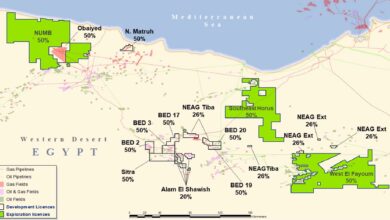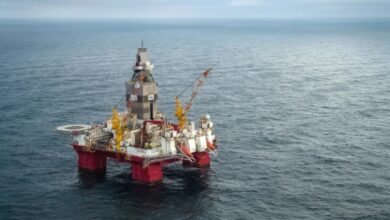EIA report: North American growth helps boost global oil production to record levels
This animated map shows how world crude oil and lease condensate production, measured in millions of bbl/day, has changed since 1980 in key oil-producing regions. Growth in North American crude oil production and recovery in African and Asian markets contributed to a record global production of 75.6 million barrels bbl/day in 2012, according to an agency brief.
By Katie Mazerov, contributing editor
The Middle East still ranked as the world’s No. 1 crude oil producer in 2012, but growth in North American crude oil production and recovery in African and Asian markets, specifically China, contributed to a record global production of 75.6 million bbl/day, according to a brief released on 17 June by the US Energy Information Administration (EIA). Eclipsing the Middle East, it was the strength of the North American, African and Asian markets that drove an overall 2% increase over 2011 levels in global crude oil production, including lease condensate, the brief stated.
In 2012, the Middle East produced 24.1 million bbl/day of crude oil, a basically flat number over 2011 production. Gains in several Middle Eastern nations were offset by declines in Syria and Qatar. Sanctions also contributed to a 17% decline in Iranian production.

The EIA report synthesized recent figures with historical data on regional production trends between 1980 and 2010, EIA analyst Stacy MacIntyre, who compiled the statistics, explained. The data came from the agency’s International Energy Statistics database, with additional trend information compiled from EIA country analysis briefs or other energy briefs published by the EIA, she said.
The former Soviet Union ranked second in global production, with 12.7 million bbl/day, followed by North America, Africa, Asia and Oceania, Central and South America and Europe. Russia, the world’s second-largest crude oil and lease condensate producer, has seen production gains since 2009 due to development of eastern Siberian oilfields, use of advanced technologies and improved recovery techniques in mature fields in western Siberia, and development of a new export infrastructure, the report stated.
In North America, average annual production rose to 12.2 million bbl/day, a reflection of increasing production in unconventional oil plays in the US and rising bitumen and synthetic crude oil production in the Canadian oil sands. North American production had dropped to 10.4 million bbl/day in 2008.
Trends in other global markets reported by the EIA include:
- Africa: Recovery of Libyan production was the main driver behind a 6% increase in African production in 2012, to 9.1 million bbl/day. New production in some non-OPEC countries, such as Ghana, also has boosted oil production in the region since 2010. Ms MacIntyre also cited Niger, a landlocked nation in West Africa, as having gone from zero production in 2010 to 20,000 bbl/day in 2012.
- Asia and Oceania: A 2% decline in oil production in most of the region in 2011 has not recovered, with production remaining at 7.6 million bbl/day. Offsetting that, China, the region’s largest producer, saw production rise after the Peng Lai field in the Bohai Bay was brought back online. It is China’s largest offshore crude oilfield and had been shut down following a spill in 2011. “China’s production declined 0.5% 2011 and grew 1.7% in 2012,” Ms MacIntyre said. “China accounts for 57% of Asia’s production and 54% of Asia & Oceania combined.” Prior to shut-in, production rates at Penglai 19-3 had peaked at roughly 130,000 bbl/day, according to an EIA Country Analysis Brief for China, revised in April.
- Central and South America: Market contractions throughout the region, notably Brazil and Argentina, contributed to a 1% decline in 2012, following an increase of 3% in 2011. Production in 2012 was 6.6 million bbl/day.
- Europe: Continued declining production in the North Sea is the primary reason for a downward trend in Europe. Production declines averaged 9% in both 2011 and 2012, in part due to unplanned outages in the UK and a 12% tax rate increase implemented in 2011 by the British government.





I like reading an article that will make people think.
Also, thanks for permitting me to comment!